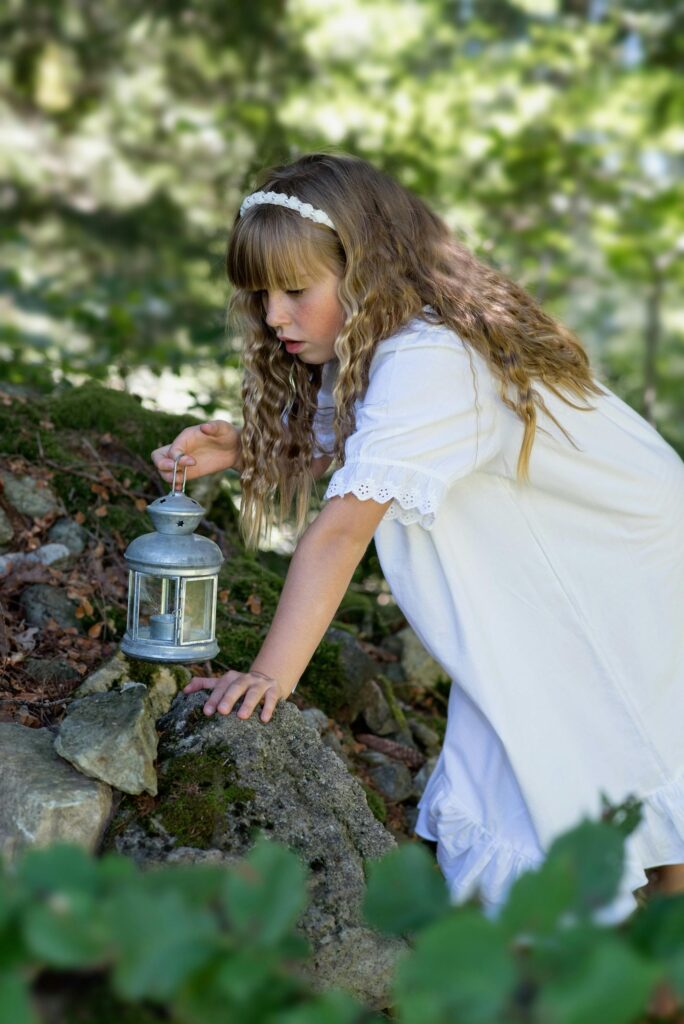From the early moments of your youth, you were likely exposed in some way to the wonderful world of fairy tales. However, as you grew up, you also likely began to question the merit of these stories. No one ever lives happily ever after, do they? In real life, the Beast stays the Beast. The stepsisters and stepmother win. Snow White never wakes up from her sleep. Fairies are just figments of childhood naïveté, and certainly Red Riding Hood never escapes the Wolf. Hansel and Gretel are lost to us forever, and the shard of glass in the little girl’s heart leaves a scar that will never be healed.
If this is true, why do we then tell our children fairy tales? If they merely postpone the recognition that ‘the real life’ is full of broken, horrendous evils, and trick children into believing that happily ever after is indeed possible, why do we continue on sharing these stories?
Perhaps fairy tales teach us more about reality than we think. And, perhaps they awaken our imagination to see the world in a more full way: recognizing both what is, what can be, and all the in-between. Indeed, perhaps looking at the world through the lens of fairy tales is the best way to look at the world.
Before we can make a definitive statement about the merits of a fairytale vision of the world, it is probably in order to consider several key features of this view: Enchantment, virtue, and wonder.
Enchantment suggests to us an idea of mystery. We learn from fairy tales that there are spells that come over us, and can only be broken by certain requirements. However, these spells reveal to us, or if not us, those around us, something about ourselves, and the nature of the world. Spells, though a form of disguising reality, often bring out that which is true which we like to hide. Think of the spell the Beast is put under in “Beauty and the Beast”–the witch puts him under a spell, transforming a handsome prince into the form of a monstrous beast. However, this enchantment reveals to us, and to himself, just how monstrous his vanity is. Funny how it is that a spell, which might seem like a disguise, actually reveals to us key truths about reality. Perhaps re-enchanting our view of the world can have a similar effect: We look for the moments when we are overcome by feelings, thoughts, situations, and see that even these ‘spells’ we are under can reveal to us something about reality that we might never discover otherwise.
Oftentimes, it is through the enchantments we encounter and the mysteries we are forced to consider that we learn virtue. We come to understand that there are such clear distinctive things as good and evil. We learn that things are not always what they seem–something might seem good, it might be disguised by some sort of allurement or elsewise, and it could be very dangerous. From this we learn discernment, but also, we learn about the nature of good and evil. Evil likes to hide itself, to pretend that it is good. However, its disguise ultimately fails, every time. Consider the witch’s house in “Hansel and Gretel” as an example of this: a house made of candy seems to be the best situation to find yourself in as a starving child in the woods. A strange, yet seemingly nice lady, invites you in for more goodies. However, she shows her true colors when she locks you and your sister in a cage to fatten you up before she cooks you for her supper. Evil and good are clear, distinctive standards. Evil tries to disguise itself as something good, but ultimately fails every time.
Wonder: Fairy tales teach us that all is not what it seems. However, they do teach us that reality can be known, and known through discovery. In order to make these discoveries, we need to be discerning, we need to act virtuously, but we also need to explore. We need to go on adventures, and we need to gaze at the world with eyes wide open, ready to experience whatever beauty we come across. We need to understand our failure to recognize illusions, but to continually seek for reality, and to be open to wonder and delight at the possibilities this adventure opens up to the world.
From fairy tales, we learn about enchantment, wonder, and virtue. Now, you might say that none of these qualities really help us in real life–except for virtue, but even that isn’t necessarily the most helpful if evil likes to disguise itself as good. Why, after all this, ought we to value the vision of fairy tales so much?
Fairy tales teach us about virtue so that we know, in the words of Alasdair MacIntyre “to act well in the story that we are in.” Enchantments teach us that all is not as it seems, but that sometimes ‘spells’ cast over us reveal reality in a way that could not be otherwise accessed. Wonder teaches us to delight in Beauty, and to keep our eyes wide open to possibility. This helps us to both recognize illusions and reality. (After all, it’s rather hard to recognize if something is an illusion if your eyes are shut tight in the first place).
So, where ought we go from here? I would suggest choosing every day to practice gratitude, wonder, and searching for truth, even in some small ways. Remember that all is not as it seems, and this means you can find beauty in places where you least expect it. Allow yourself to be changed by what you discover, formed into a more delighted human. And perhaps, in and through this, you shall wake up one day to discover that indeed, the world is a more beautiful and wonderful place, all because you took the time to truly observe it.

